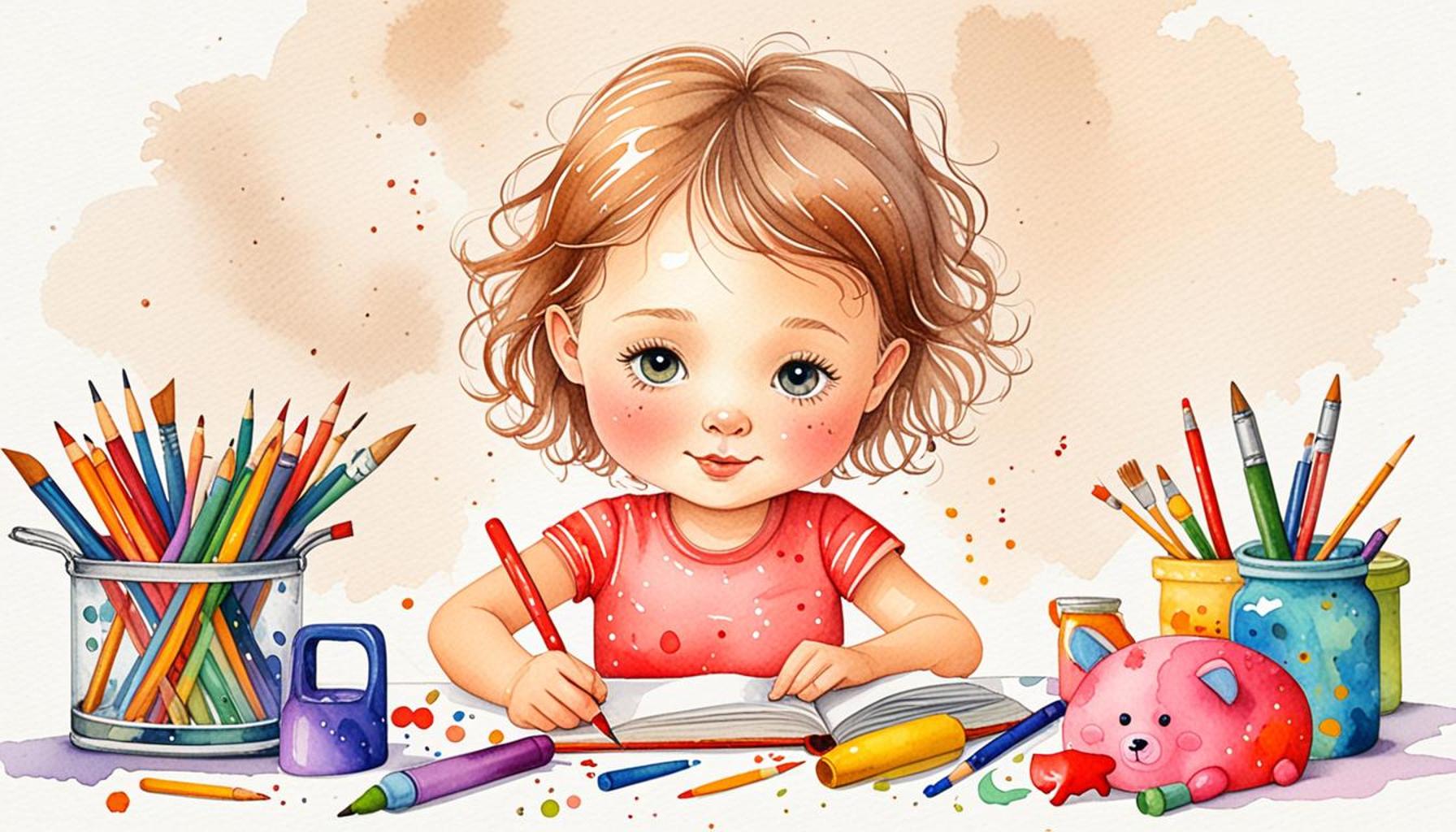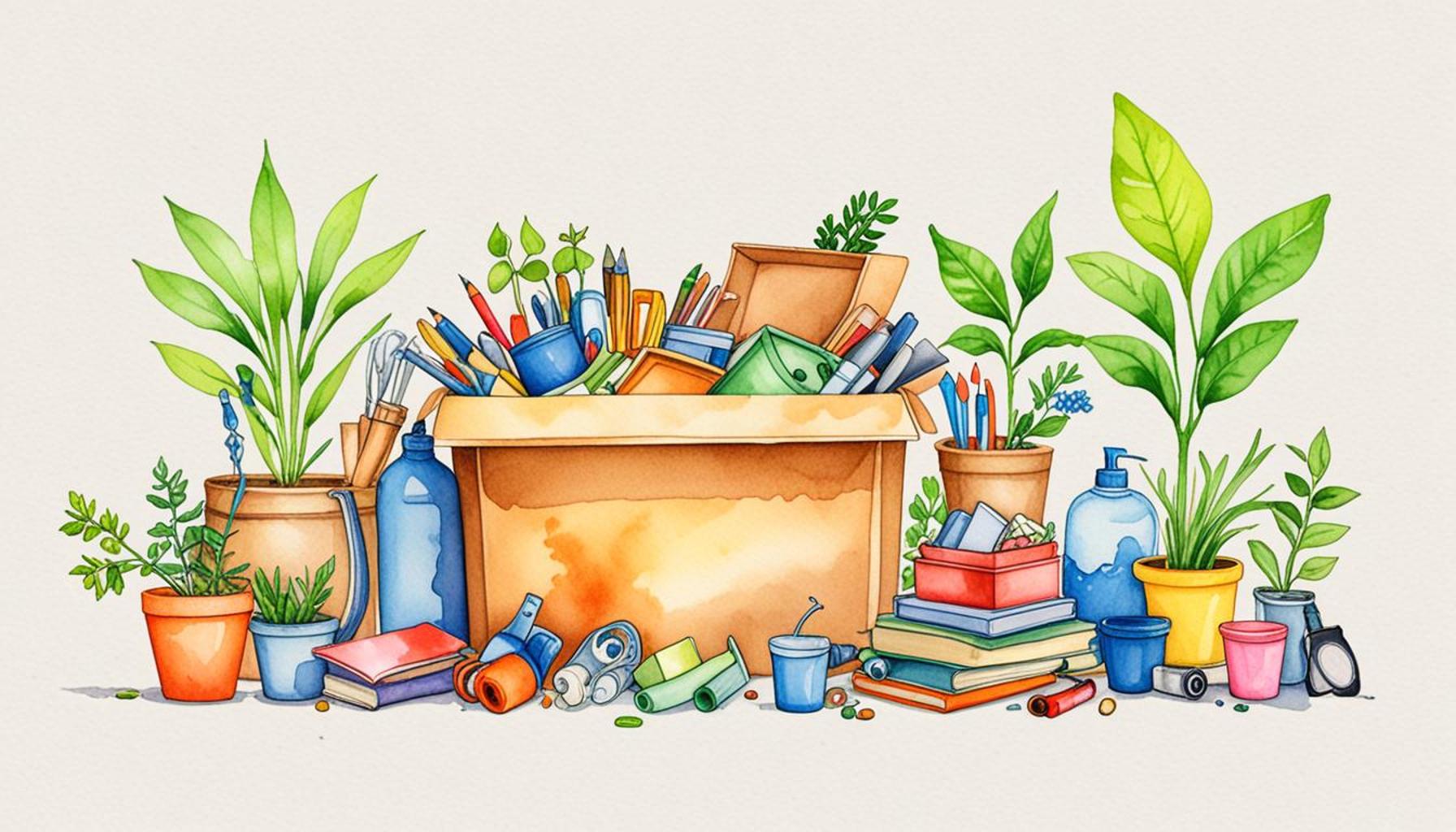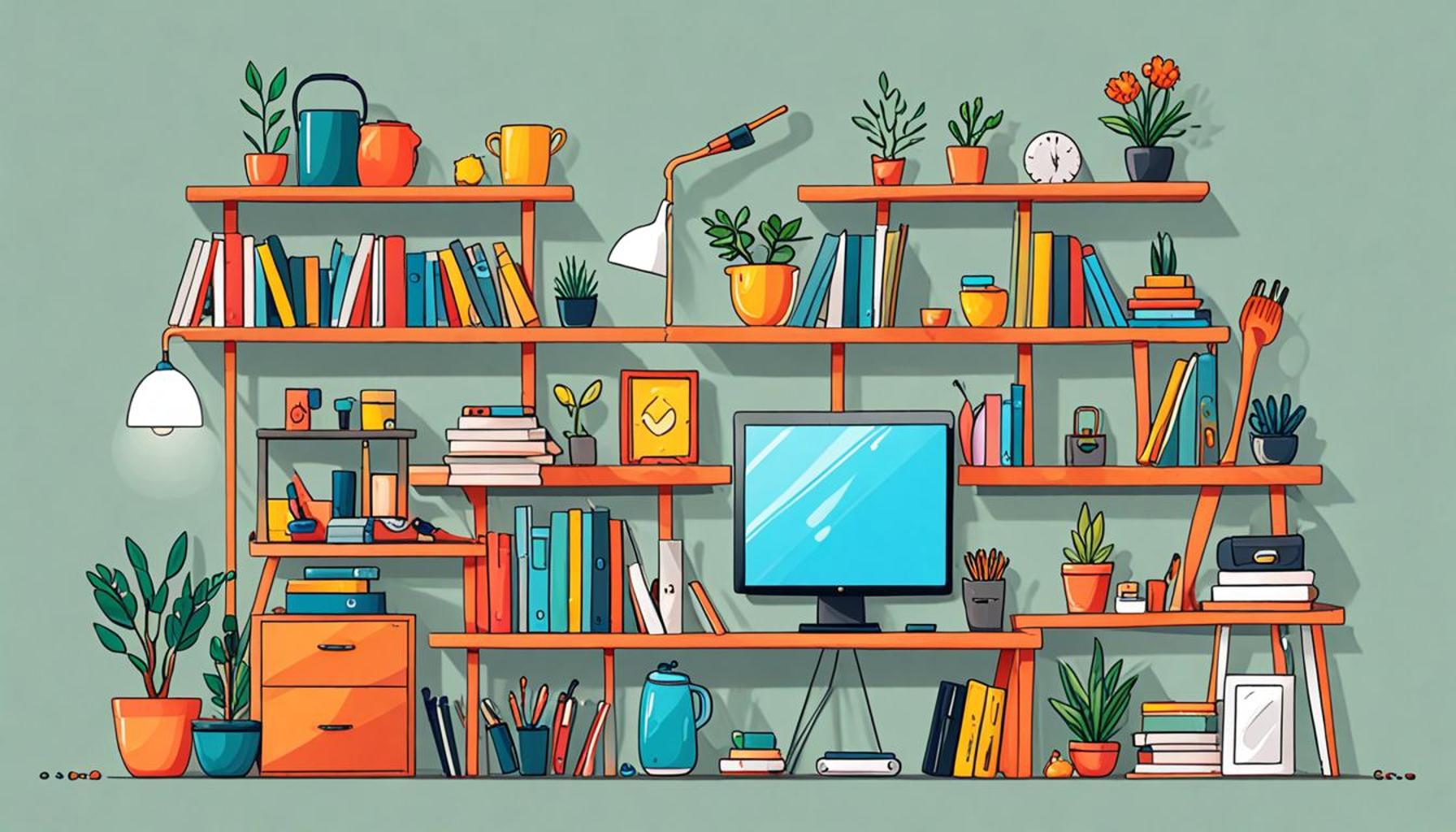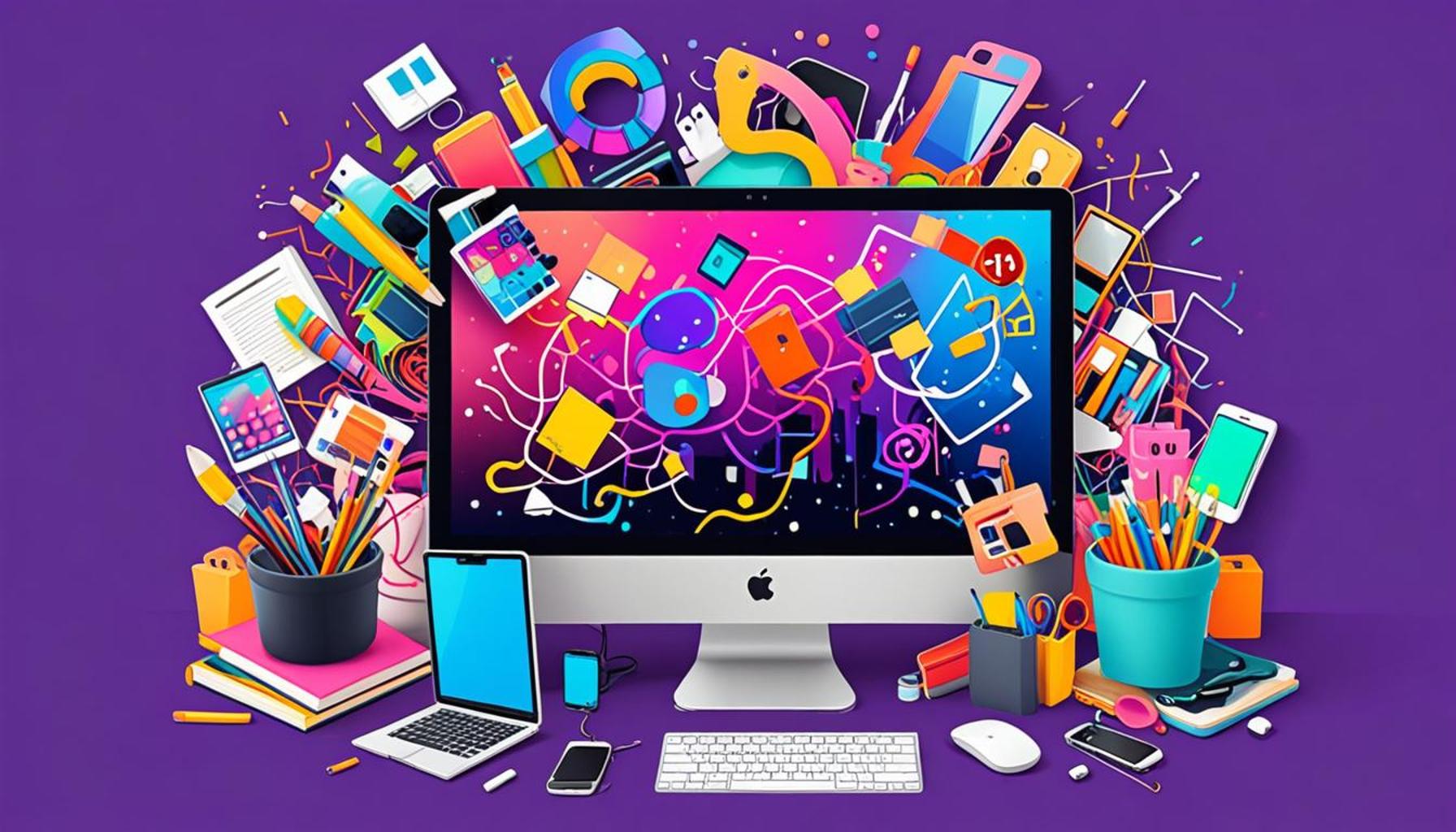Decluttering Techniques for Kids: Teaching Organization from an Early Age

Understanding the Importance of Decluttering for Kids
As children grow, they often accumulate a variety of toys, clothes, and various other belongings. Teaching kids how to declutter and stay organized is crucial for reducing stress and fostering a sense of responsibility. Childhood is a formative period, and incorporating organization skills early on can help children develop lifelong habits that promote a balanced lifestyle. Research indicates that children who learn these skills tend to demonstrate improved focus and emotional well-being throughout their academic journeys.
Beyond enhancing their immediate environment, decluttering techniques also encourage creativity and mindfulness. A well-organized space can inspire imaginative play and reduce feelings of overwhelm. Here are some engaging strategies to consider that can make this process both fun and rewarding for children:
- Sort and Decide: Help children categorize their belongings into groups. This can be accomplished through creating three separate areas: a “keep” pile for cherished items, a “donate” section for items in good condition that they no longer use, and a “recycle” spot for broken or worn-out belongings. For example, a child may find that they have multiple stuffed animals that they no longer play with, encouraging them to consider who might benefit from these toys.
- The 4-Box Method: This visual and structured approach uses four labeled boxes: keep, donate, toss, and store. Each box has a specific purpose, simplifying the decision-making process. A child might discover old art supplies that inspire them to create new masterpieces or books they’ve outgrown, which can be passed on to younger siblings or friends.
- One In, One Out: Foster the habit of removing one item whenever bringing in a new one. This principle helps maintain a manageable amount of belongings and prevents clutter from accumulating. For instance, if a child receives a new toy as a gift, they can choose one old toy to donate, reinforcing the idea of sharing with others.
Moreover, creating a routine around organization can significantly ease the burden on both kids and parents. Setting aside specific days for decluttering or organizing allows children to anticipate and prepare for these activities. Incorporating fun elements, such as music or timed challenges, can make these tasks less of a chore and more of an enjoyable experience. Over time, these practices can lead to better academic performance, as studies suggest that children with organized environments often display higher concentration levels and increased productivity.
In the upcoming sections, we will explore more effective strategies, practical tips, and delve deeper into the psychological benefits of teaching children to declutter. Let’s discover together how to make organization an engaging and rewarding practice for kids!
EXPLORE MORE: Click here to discover practical strategies
Engaging Strategies for Decluttering
Incorporating fun and engaging strategies can greatly enhance a child’s understanding of organization and decluttering. When these techniques are introduced as playful activities rather than chores, children are more likely to participate enthusiastically. Here are several effective approaches designed to turn decluttering into a motivating experience:
- Treasure Hunt Declutter: Transform the decluttering process into a treasure hunt. Set a timer and challenge your child to find five items that they no longer use or need. This not only makes the activity fun but also encourages them to actively reflect on their belongings. By approaching it as a game, children feel more engaged and less overwhelmed.
- Color Code Your Space: Introduce the concept of color coding to help children organize their toys and belongings. Assign specific colors for different types of items, such as red for books, blue for action figures, and yellow for art supplies. This visual system can simplify the process for younger children and encourage them to maintain a tidy environment.
- Decluttering Goals and Rewards: Set achievable decluttering goals and offer rewards for reaching them. For instance, if your child manages to declutter their toy box successfully, they could earn a small treat or an extra story at bedtime. These incentives create a positive association with the practice of organization and motivate children to take action.
Beyond these fun strategies, it’s crucial to work alongside children during the decluttering process. Many kids may feel attachment to their belongings and find it difficult to let go. By ensuring your participation, you can provide support while helping them navigate feelings of nostalgia or guilt associated with giving away toys and clothes. Share personal stories on how you once faced similar decisions, reinforcing that it’s perfectly normal to let go of things that no longer serve a purpose.
Additionally, storytelling can play a pivotal role in this journey. Create a narrative around items they are hesitant to part with. For example, if a child is struggling to let go of an old stuffed animal, you might ask them to imagine the adventures it could have with another child who would cherish it. This imaginative exercise promotes empathy and encourages children to see the potential joy their old belongings could bring to others, making it easier for them to declutter.
As children progress in their decluttering journey, it is essential to instill a sense of ownership over the process. Encourage them to set up their organizational systems that work best for them. Whether it’s stacking books vertically on a shelf or organizing toys in bins, allowing children to personalize their spaces fosters independence and pride in maintaining order. Research supports this notion, stating that children who have a hand in organizing their spaces are more likely to value and care for their belongings.
In conclusion, implementing these engaging decluttering techniques can transform a seemingly daunting task into an enjoyable adventure for kids. As they learn the importance of organization, they also cultivate essential life skills that may benefit them for years to come. In the following sections, we will delve deeper into practical tips for maintaining an organized environment and explore the long-lasting psychological benefits of teaching children these fundamental skills.
Effective Decluttering Techniques for Kids
When it comes to teaching children about organization, it’s essential to implement techniques that resonate with their understanding and capabilities. Here are several strategies that parents can use to help children grasp the concept of decluttering.
1. The ‘One In, One Out’ Rule
Introduce children to the idea that for every new item they bring into their space, they must let go of an old one. This not only limits clutter but also prompts children to think critically about what is truly valuable to them. By using this rule, kids learn to make decisions about their belongings, fostering a sense of responsibility.
2. Fun Sorting Activities
Transform decluttering into a game. For example, you can set a timer and challenge your child to sort items into designated bins: ‘Keep’, ‘Donate’, and ‘Trash’. This engaging activity makes the process feel less like a chore and more like an adventure, helping kids develop sorting skills that will be beneficial throughout their lives.
3. Create a Visual Schedule
For younger children, a visual schedule or checklist can be a powerful tool. Draw pictures indicating what items need to be decluttered or organized, serving as a guide for kids to follow. Visual aids not only assist in comprehension but also enhance memory retention, making the decluttering process smoother and more manageable.
4. Ask for Feedback
Involve children in discussions about their belongings. Asking questions like, “Do you still play with this toy?” encourages kids to reflect introspectively. When children express their thoughts on their belongings, they are more likely to take ownership of their decisions, leading to effective organization habits.
5. Celebrate Minimalism
Share the concept of minimalism with children. Discuss how having fewer possessions can lead to a simpler and happier life. When kids understand the benefits of minimalism, such as increased space for activities and enhanced mental clarity, they may motivate themselves to declutter regularly.These techniques aim to build a foundation for lifelong organizational skills. By integrating fun and engagement into the decluttering journey, we not only invite children to participate actively but also empower them with the abilities to thrive in organized environments.
Incorporating Decluttering into Daily Routines
To make organization a part of everyday life, incorporate short decluttering sessions into daily routines. This practice helps children understand that maintaining organization is an ongoing process rather than a one-time event. More importantly, it aids in establishing habits that they will carry with them into adulthood. Highlighting organization fosters a sense of accomplishment and instills in kids a positive attitude toward maintaining order in their lives. Remember, the goal here is not perfection, but rather progress and the development of healthy habits that will benefit them as they grow.
DISCOVER MORE: Click here for a step-by-step guide
Fostering Lifelong Organization Skills
Curating an environment that encourages children to embrace decluttering not only helps them keep their spaces tidy, but also lays the groundwork for lifelong organization skills. As children become proficient in the art of decluttering, they can learn valuable lessons that extend beyond toys and clothes. By introducing them to more advanced organization techniques, children will develop critical thinking skills, patience, and responsibility.
One effective method to solidify these lessons is by utilizing the Four-Box Method. In this technique, you provide four boxes labeled: Keep, Donate, Sell, and Trash. As children go through their possessions, they categorize items into these boxes, allowing them to make mindful decisions about what to do with each item. This process not only simplifies the decluttering task but also reinforces how to make thoughtful choices about what they own. Research shows that children who practice decision-making in a structured manner are more inclined to develop confidence in their choices later in life.
Another valuable approach is the concept of one-in, one-out. Teach your child that for every new item they want to bring into their room, whether it’s a toy, gadget, or game, they must first eliminate something they no longer need or use. This principle encourages children to think critically about their belongings and fosters appreciation for what they already have. Studies have demonstrated that when children are involved in decisions regarding their possessions, they exhibit a greater sense of ownership and responsibility toward maintaining an organized space.
Additionally, you can introduce scheduled decluttering sessions as part of their weekly routine. Designating specific times to tidy up their spaces not only normalizes the practice of decluttering but helps children develop a habit of organization. You might make this a family ritual; perhaps setting aside an hour each Sunday afternoon where everyone collaborates to organize their areas. This camaraderie reinforces the notion that decluttering is a shared responsibility, thus making it less of a solitary task.
Moreover, incorporating visual organizers can further assist children in maintaining a clutter-free zone. Utilizing stacking bins, labeled baskets, and drawer dividers can create an inviting space for children to easily access their belongings. Visual aids serve as reminders about where things belong and help children develop spatial awareness. Research in child psychology highlights that organized environments significantly enhance focus and creativity in children, leading to improved academic performance.
Finally, it’s essential to cultivate an emotional connection to decluttering. Guide children in learning the difference between sentimental items and those that merely occupy space. By helping them recognize what they truly value, you can nurture emotional intelligence while promoting clarity about their belongings. An emotionally aware child is more likely to be intentional about what they choose to keep, thus developing a deeper appreciation for tidiness and organization.
As children master these various techniques, they begin to appreciate the impact of organization on their daily lives. Each method introduces new ways to appreciate space and possessions, encouraging them to embrace a lifestyle that values clarity and independence. This foundation in organization not only helps them manage their belongings effectively but also prepares them for future responsibilities like managing schoolwork, personal spaces, and beyond.
DISCOVER MORE: Click here to unlock the secrets of productivity
Embracing Organization for a Bright Future
In conclusion, instilling decluttering techniques for kids proves invaluable in shaping their futures and nurturing vital life skills. As guardians and educators, by prioritizing organization from an early age, we empower children to grasp the significance of a tidy environment and the responsibilities tied to their belongings. The methods outlined—such as the Four-Box Method, the one-in, one-out rule, and scheduled decluttering sessions—are not just mechanisms for reducing clutter; they are proactive strategies for cultivating critical thinking, emotional intelligence, and decision-making abilities.
By integrating visual organizers and fostering an emotional connection to their possessions, we help children create spaces that inspire creativity and focus. Such environments can seamlessly translate to improved academic performance and an overall sense of well-being. The skills they acquire serve as foundational elements that accompany them into adulthood, preparing them for further challenges like time management and personal responsibility.
Ultimately, teaching kids to embrace the art of decluttering is more than a sustainable habit; it’s a celebration of simplicity and mindfulness in a world often dominated by excess. As they learn to appreciate their possessions and understand the balance between need and want, children will not only experience the benefits of organized spaces but also develop a lifelong appreciation for clarity and intentional living. Investing time in these techniques today will pave the way for confident and organized individuals tomorrow.


